On the tracks of Giovannino Guareschi
 Roncole Verdi, outside Busseto in the Parma province, is well known for being the birthplace of the illustrious and loved Maestro Giuseppe Verdi. Few know that at a short distance from the home, now a museum, of the great composer, there is another Home Museum and Center of Study of another very great artist. We are speaking of the most translated and sold Italian poet and writer in the world: Giovannino Guareschi. Italian critics opposed him for many years while he was alive and after his death. But his readers have always loved him, generation after generation, bestowing a never ending success. His most famous work, story of Mondo piccolo, in which the adventures of Don Camillo and Peppone are narrated, famous the world over through the film starring Fernandel and Gino Cervi.
Roncole Verdi, outside Busseto in the Parma province, is well known for being the birthplace of the illustrious and loved Maestro Giuseppe Verdi. Few know that at a short distance from the home, now a museum, of the great composer, there is another Home Museum and Center of Study of another very great artist. We are speaking of the most translated and sold Italian poet and writer in the world: Giovannino Guareschi. Italian critics opposed him for many years while he was alive and after his death. But his readers have always loved him, generation after generation, bestowing a never ending success. His most famous work, story of Mondo piccolo, in which the adventures of Don Camillo and Peppone are narrated, famous the world over through the film starring Fernandel and Gino Cervi.
Guareschi’s literary production is impressive, so much so that the Center of Study an Home Museum conserve over two hundred thousand documents: manuscripts, notebooks, diaries, notepads, drawings and photos. All cared for and constantly updated with love and dedication by his son and daughter Alberto and Carlotta. By appointment it is possible to visit the exhibition and researchers are allowed to consult his personal Library and Archives, apprised by the Ministry of Cultural Assets.
Guareschi led a very animated life. He lived the suffering of prison in Nazi concentration camp during the Second World War. He contributed to the 1948 electoral campaign, won by the Christian Democrats, as journalist and writer. Guareschi invented the campaign slogan “in the election booth God sees you, Stalin does not.” He drew a memorable poster of a skeleton behind the barbed wire fence of a Soviet prison camp declaring: “100,000 Italian soldiers did not return from Russia. Mom, vote against them for me too”
At the peak of his success, he also lived the dishonor of imprisonment, condemned unjustly for slander and accused by Alcide De Gasperi who, twist of fate, became the leader of the Christian Democrats that Guareschi had so efficaciously favoured through his pen and wit.
On the tracks of Giovannino Guareschi
In 1964, at Roncole Verdi, in the rooms today the cite of the Museum and Center of Study, Giovannino Guareschi opened a restaurant. In a 1965 television interview, he explained with subtle irony why he decided to begin this new adventure:
“When I was a journalist, experts of journalism suggested I dedicate myself to agriculture. I have followed their advice. Unfortunately, experts in agriculture have suggested I go back to journalism. So I have chosen this activity which does not damage neither journalism nor agriculture. Furthermore, I can cultivate my hobby which is, and always has been, that of writing because today I can finally write something substantial: the menu.”
The Guareschi restaurant offered the typical cuisine of the Bassa, simple but genuine and very tasty: culatello, home made pasta, tripe, pork, braised beef, mixed boiled meats. One of the specialties cotechino wrapped in veal. And wine. Guareschi loved a good glass of wine. Moderate quantities because he never exaggerated. He personally produced the wine for his restaurant: Lambrusco and Fortanella, two lively reds. Guareschi produced about 15.000 bottles a year from his vineyards. The vines were over forty years old and produced very few grape bunches which made very good wine. Wine experts judged it excellent. Lambrusco Maestri, Scorzamara and Fortana grapes and Guareschi designed the labels personally.
Sources:
Casa Museo Guareschi – Roncole, 43010 RONCOLE VERDI (Parma)
tel. 0524 92 495 fax. 0524 91 642 info:pepponeb@tin.it
Visite su appuntamento
Il mondo piccolo della bassa
Il grande mondo di Giovannino
Guareschi e il vino
Mondo Guareschi
Guareschi: sito ufficiale
Roncole: oltre Verdi al ristorante di Don Camillo
Guareschi raccontato dai figli
Turisti per caso tra Verdi e Guareschi
Viaggio a Roncole
Picture: Wikipedia


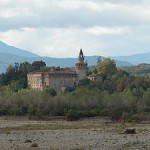
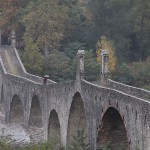
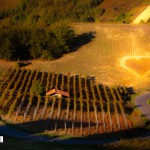
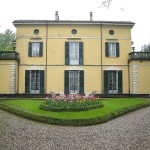
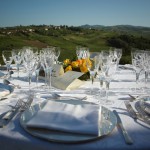
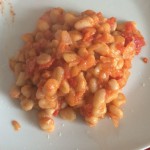

Peppone and Don Camillo, two real myths